Ahh, the wonderful world of Sump Pumps. Those pesky little things in your deep, dark basement that we only ever think about when they stop working. Though I would say we likely don’t think about our A/C, Furnace, Water Heater, or Water Softener before they go out either. Beyond them existing, we don’t think about how they work much at all. And most of the time, you don’t need to know. The important thing is that they work.
However, if you have an inquisitive mind, read on about whether sump pumps need weep holes.
Basic Operation of Sump Pump
A Sump Pump operates on simple physics. A water-cooled motor is housed inside a (if properly built) cast iron or stainless-steel casing. This motor moves a propeller at the base of the pump, pushing water up through the pipe. Imagine a plane propeller facing the ground, pushing all the air straight up. Same concept, but with water and your basement.
This water is pumped through a 1.5” or 2” pvc pipe, passing a 1-way check valve, and runs outside your house and into the yard or storm sewer system. The basic concept being that as long as the Sump Pump can keep the water in the basin discharged, it can keep the water level under your floor, and your basement dry.
Read also – How Submersible Sump Pumps Work?
What are Sump Pump Weep Holes?
Alright, now for the confusing part. In the pvc pipe described above, between the pump and the 1-way check valve, there needs to be what is called a “weep hole” in the pvc. This is a 1/8” hole drilled at an upward angle. Now, why would anyone drill a hole in a pipe they are discharging pressurized water through?
The answer is Air Lock. Weep Holes prevent Air Lock in your Sump Pump. Dumbed down a bit more, think a bubble of air surrounded by water on both sides. This “bubble” of air causes a change in pressure that does not allow the pump to push water through the pipe. It simply doesn’t have the power.
Compare to Brakes
Have you ever done brakes on your car? Do you know about how we need to “bleed” the brake lines in order to make them effective? This is much the same concept, as air in the brake lines do not allow you to put enough pressure to activate the brakes through the pedal.
An air bubble in your Sump Pump line will cause “Air Lock” and prevent your pump from pumping the water effectively out of your home.
How to Install Weep Holes in Sump Pumps
Installing a Weep Hole in your Sump Pump is easy. You simply take a 1/8” drill bit and drill. Once you have your initial Sump Pump assembly together with the pvc piping installed, you then drill the hole (Pump OUT of the pit, as you will find this makes it far easier).
It is important to start this hole about 6” above the Sump Pump, and to drill it at a 45-degree angle UPWARDS. This will allow the water that will inevitably shoot out of this hole to be directed downwards. You will slap your own forehead when you install this hole at a downward angle and water is spraying up and out of the pit every time the pump goes off.
Thanks for reading, and as always:
“Not Everything’s Better When Wet”
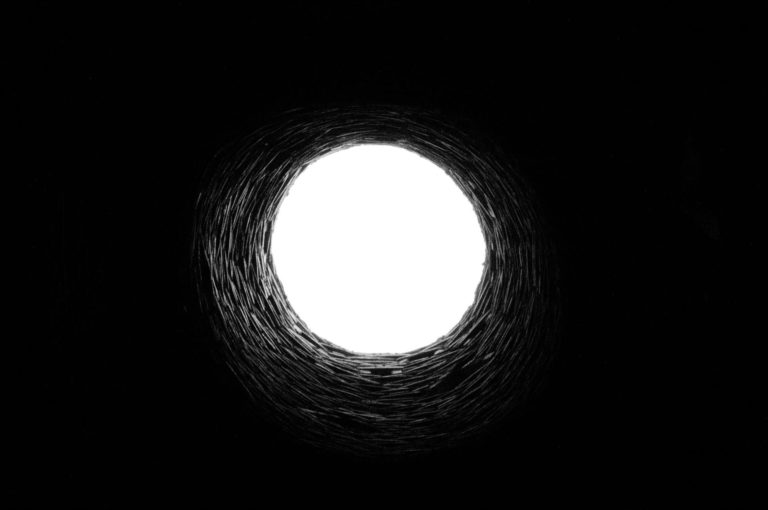
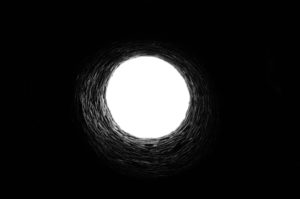
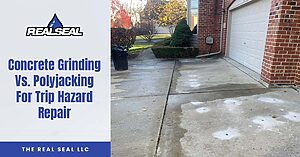
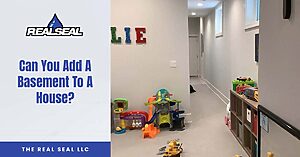
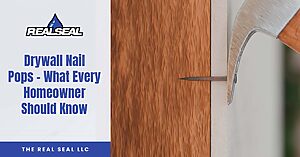
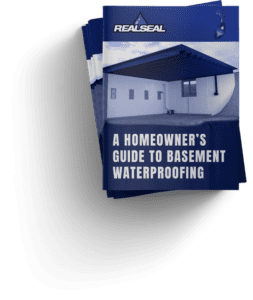

35 Responses
thank you for your advice.
Can you put a weep hole 15 to 18 inches above the pump?
Hi Vince!
Best not to put a weep hole that high. You’re likely to get spray up over the pit lid. The most effective placement of the weep hole is a few inches above the connection the sump pump. You also want to angle that hole downwards so the spray from the water goes down to the bottom of the pit. Hope this helps!
In 15 years of servicing and installing sump pumps never once Have I received a call for an air locked Home Depot sump pump. But I have opened plenty of crocks to check the pump or water flow and PSSSSSSS water everywhere.
Unscrewed a crock lid once just as the pump kicked on. Customer was standing across from me and took that “downward” spray from knee to face! I guess the original call was for sewage back up. The second call was to another contractor.
Beware the PEE hole!!
Hahaha beware the pee hole! Yes, it is very important that when the weep hole is drilled that it is drilled upwards into the pipe, allowing the water to spray down into the pit. Air lock in sump pumps is a real thing and it is not only standard installation procedure for the industry, but also standard installation procedure straight from the manufacturer.
Zoeller recommends this hole to be drilled at the level of the top of the sump pump but when I learned this I had already installed piping and the check valve from the pump. Can this hole be drilled to high or too low for functional reasons? Thankyou!
Hi Randal!
That is a great question. We also recommend the weep hole be installed at the top of the sump pump (or about 12″ from the bottom of the pipe). The reason for this is to allow the water to drain out of the pipe below the check valve to prevent something called “air lock.” Odd phenomenon, but your pump can actually lock up if there is pressure/water in that section below the check valve.
So having the hole as far down as possible is the best scenario, but we have seen them work halfway up the pipe as well. We would not recommend them be drilled higher, as it would defeat the purpose and also likely end up spraying water outside of the pit when the pump is triggered.
Hope this helps!
Since I have a back up sump pump, I also have a check valve connected right above my primary sump pump to keep water back charging thru the primary when the back up sump pump is on. I also have the check valve outside of the sump pump. My question is this: Should I drill my weep hole “under” that bottom check valve to prevent vapor lock? If I drill the weep hole in the PVC pipe between the 2 check valves I’m guessing that will not prevent vapor lock.
Thoughts?
Hi Pete!
From the sound of it, you have a sump pump, battery backup, and a check valve for each. In this case, you will want the weep hole on both pipes beneath the check valves. Best location for it is about 8″ or so above the bottom of the pipe where it goes into the sump pump itself.
I have a Zoeller sump pump and just recently noticed that it will not shut off once the float goes down and the switch kicks off. Also, after the pit is basically empty, water shoots out of a little hole that’s built into the side of the base of the pump; this hole is not the weep hole drilled into the side of the vertical PVC discharge pipe. The hole in the side of the pump base is exposed because the pump eliminates most of the water from the pit because it doesn’t shut off. Do you know what would cause water to shoot out of this hole, and does it have anything to do with the pump not shutting off?
Hi Rodney!
Some Zoeller sump pumps have weep holes already built into them. You’d be surprised, but there are many licensed plumbers and waterproofers who do not know, or outright refuse, to install the weep holes. So some sump pump manufacturers combat this by installing them in the pump themselves during production.
Your float switch is completely separate from the weep hole issue. Zoellers are great pumps, but notorious for their float switches failing. The fix for this is to have the float switched replaced. Depending on the life of the pump, it may be more economical to swap the entire pump out altogether. If the pump is more than 5 years old, we would recommend swapping the pump out for a new one.
As an aside on float switch failures…
I had a float switch “fail” in my Zoeller. I tried taking apart and cleaning and working myself but no luck. The switch still worked but the float wasn’t engaging it, even though it was floating.
Upon calling their support, they suggested I put some white lithium grease on the boot of the switch.
I did that as a last resort before replacing, and to my amazement, it started working again. That was about 6 years ago, and it’s still working great.
That’s a great tip, Eric! Thank you!
Hi there, I have a weep hole that is near the top of the basin. Would drilling a second weep hole lower help catch any excess water in the basin? Would a second weep hole cause any other problems? Thanks for your help!
Hello! You can have a hole deeper in the pit, but what is the purpose? Are you seeing water seepage in the basement? There is a better solution than drilling more holes in the pit. Some of our sump pits are perforated all around to allow water in. It depends on the situation, but you generally aren’t hurting anything by putting holes in the pit. Just be sure you don’t have sandy soil, or the sand will fill up the pit and hurt the functionality of the pump.
I had an older Zoeller that was a bear of a pump but eventually developed the infamous switch issue. Wish I know about the white lithium grease fix sooner! So yesterday replaced it with a Liberty 257 and new check valve from local supply house. Old setup had no weep hole but I followed instructions and drilled one just above the output. Whenever the pump kicks off I get a slurping or gurgling sound for about 15 second. The check valve is about 3 feet above the lid. I’m assuming this is the water from below the check valve returning to the sump. Is this sound normal? I even switched out the check valve to eliminate that as the copy culprit. Still makes that noise. Nothing online about it and no install videos have that sound.
Hi Jim!
That is the noise you are going to hear. The bleeder hole will help to prevent the pump from locking up, and is standard installation procedure. The noise you hear is simply the water exiting the bleeder hole that is beneath the check valve. You can try installing a more air-tight sump pit lid to reduce the sound. You can also lower the check valve down to just above the pit lid so it has less water to drain.
After a basement flood I had 2 sump pumps installed. Problem is I drilled the holes in the sump bucket too deep, below the top of the pump float. Now they come on too soon and run too long. It’s a full size sump bucket. Can the lower holes be filled with anything or could I cut another bucket smaller and have a bucket in a bucket?
Also the soil has a lot of iron and the water softener treatment drains into it when it runs its cycle. Is that ok.
Wish I knew the info you shared sooner. Best advice out there by far!
Thanks
Hi Glenn!
Best bet here is to replace the pit with one that has no holes. You can try inserting a makeshift sleeve, but you’d have to get it sealed real well in order to stop the water from forcing itself in. It seems you have a high water table, which is ok, but we tend to use solid pits instead of perforated ones for those situations to help manage the water better.
No problem having the water softener draining into it.
I’ll see how snug the basins fit together in the store and if not too flimsy I’ll give it a try.
Perhaps I could raise the pumps by adding another brick to each, they are already staggered in height from one another, and shorten the pvc pipe accordingly. That might help also.
Thanks!
You can try to raise the pumps, but be sure the water level never rises above the Drain Tile. If it does, you have the potential for flooding.
I’ll see how snug the basins fit together in the store and if not too flimsy I’ll give it a try.
Perhaps I could raise the pumps by adding another brick to each, they are already staggered in height from one another, and shorten the pvc pipe accordingly. That might help also.
Thanks!
My old sump pump did not have a weep hole. I installed a new Zoeller and drilled a
Weep hole in the PVC discharge pipe. When the pump starts it gurgles, the check valve vibrates and makes noise as air is pushed out until water fills pipe pack up. I am using one of the silent check valves that closes with no clanging. Any idea on how to eliminate this noise from the air caused by weep hole?
Hi David,
There are a couple ways to accomplish this. First, the PVC Discharge Pipe should be secured against the foundation with a sturdy support. We recommend a metal “C” fastener, used for just such an application. This will lessen the vibrating of the check valve and pipe.
Secondly, a solid sump pit lid will help to muffle the sound more. If the sump pit is in a crawl or basement directly under your bedroom, we would suggest insulating the joists below the floor as well to help dampen the noise further.
I have this exact issue. The noise from the gurgling as air bubbles up through the check valve is louder than the pump. Can I put the weep hole below the low water line? i have high water table, and perpetually have water in my sump pit. It is never dry. I’ve lived here 24 years. I recently installed a zoeller to replace my old pump (Stevens). Never had a weep hole in 24 years and only used 2 pumps. Now with the weep hole and the quiet check valve I have a lot of noise. So can I put the weep hole below the low water line? air can still come out. FYI I installed piggyback float on N98. Low water level is about 2”-3” beneath top of pump. Due to pit size, I can only have so much throw in the float…
Hi Chuck, good question!
Usually, we the gurgling noise comes from above the check valve, not where the weep hole is just a few inches above the bottom of the pump. Instead, this most likely comes from the run of the pipe after the check valve peaking and then going down, allowing air to gurgle. So if your discharge line from the sump pump goes up to your rafters, and then angles down to where it leaves the home over a long run, it can allow air to gurgle back when the water discharges.
We have found the solution to this is to install a second check valve on the pipe right before it leaves the home. This will keep the water from making its way back and creating that sound.
My system seems to work good most the time but recently we have had a lot of rain. So I have been watching it more often recently just to make sure it is working. A couple of times the water has came up past the sump inputs and not pumped out. I do have a battery backup but I can’t say if it has actually cycled or not. Anyway when I notice that the water is high I can hear that the pump of the main is running but not removing water. I use a stick with a hook on it to push the float down to stop the pump briefly and when it stops it will give a bit of a clunk then it will start working and remove water. It started to cycle properly again for a couple days and then stopped and started to overfill again. It hasn’t got high enough to trigger backup that I can tell. I am not sure what make of pump it is or whether it has a weep hole or not. It looks to me that the check valve is right at the base of the pump and the backup is connected above that before it goes into the discharge line. This has worked fine for years (at least 10) so how would I know if it’s the check valve or needs a weep hole. This was installed by a guy that waterproofs basements for a living. I have read through all the above comments and certainly see that you are very knowledgeable and willing to help out. I commend you for that! Thank you!
Hi Paul!
Thanks for the comment and for a great explanation. Your problem is simple, replace your pumps. At 10 years, the pumps are well past their expected life, and should absolutely be replaced. Especially as you have had issues with the float and pumping capacity.
That said, you should not have the check valve installed so low, as you can’t get a bleed hole installed. Typically, the check valve is installed above the sump pit lid. Also, the backup system should be triggering to cycle before the water reaches the Drain Tile Inlets. As the water submerges the Drain Tile Pipe, you become vulnerable to flooding in the basement. The water in the system cannot freely run, and you are one bad storm away from flooding.
I highly recommend a strong primary pump with a backup pump and battery backup system. There are new systems that now have reporting and monitoring capabilities right to an app on your phone, allowing you to keep an eye on everything going on.
Thank you Austin!
You’re very welcome!
we recently replace our pump with a Ridgid pump. It says no need for weep on product description and no mention in the install instructions. We replaced the Check valve. Our pumps runs every two minutes. What is happening?
Hi Katie,
There could be a few reasons your pump is running every two minutes:
1) You have a lot of water, are in a high water area, or are experiencing the thaw most of the US is with all the snow melt and rain.
2) Your discharge line/gutter downspouts are not far enough from the home and the water is recirculating.
3) The pump is not large enough to handle the amount of water.
First thing to check is the gutter downspouts and discharge, as well as your current weather. It is possible you are in a high water area that will require your pump to go off every couple minutes. This happens in a lot of areas we see. In this case, we would strongly recommend a Battery Backup System as a fail-safe.
The new Ridgid Sump Pumps do not need Weep Holes, as they have designed the air lock flaw out without the need for a Weep Hole.
Austin,
I live in a newer neighborhood where the homes were all built by the same contractor. The sump pumps used are all the same as well using the Little Giant Model 6 series pump. I’m familiar with the need for an air bleed hole, but what I find interesting is that not a single pump of those I’ve talked to have that, including mine. I just bought a spare pump and decided to purchase the same pump (Little Giant) that I have now. The directions for installing the pump mentions drilling an 1/8″ hole to bleed the air, so I’m assuming the pump does not have a weep hole already designed into it as you said that some Zoeller pumps have.
My question is . . . So is everyone just lucky that their pumps work with no weep hole?
Thank you for all of the information you’ve provided. It is very helpful and well written.
John
Hi John!
Whenever neighborhoods are built all at once, there tend to be corners cut and issues down the line. The most prominent one happens to be bad or poorly compacted fill. This leads to large gaps under driveways and garages typically.
For your situation, they likely just had someone (not a plumber) go install all of those. Some newer pumps do not require weep holes, but most do. Now a weep hole is to prevent something called “Air Locking” that can cause your pump to jam up and not run. This does not happen on every pump without a weep hole, but it is a much higher chance to happen, a chance that is eliminated with the weep hole. Think of it like a seatbelt. You don’t always use it, but when you need it, it’s there. Does that make sense?
Yes it does. And I like your seat belt analogy.
Happy to help!